
Good morning. It’s Thursday, May 23.
| • | Blaming wealthy liberals for California’s housing crisis. |
| • | How redlining echoes in asthma rates of communities. |
| • | And ranking Hollywood’s destruction of the Golden Gate Bridge. |
Statewide
1
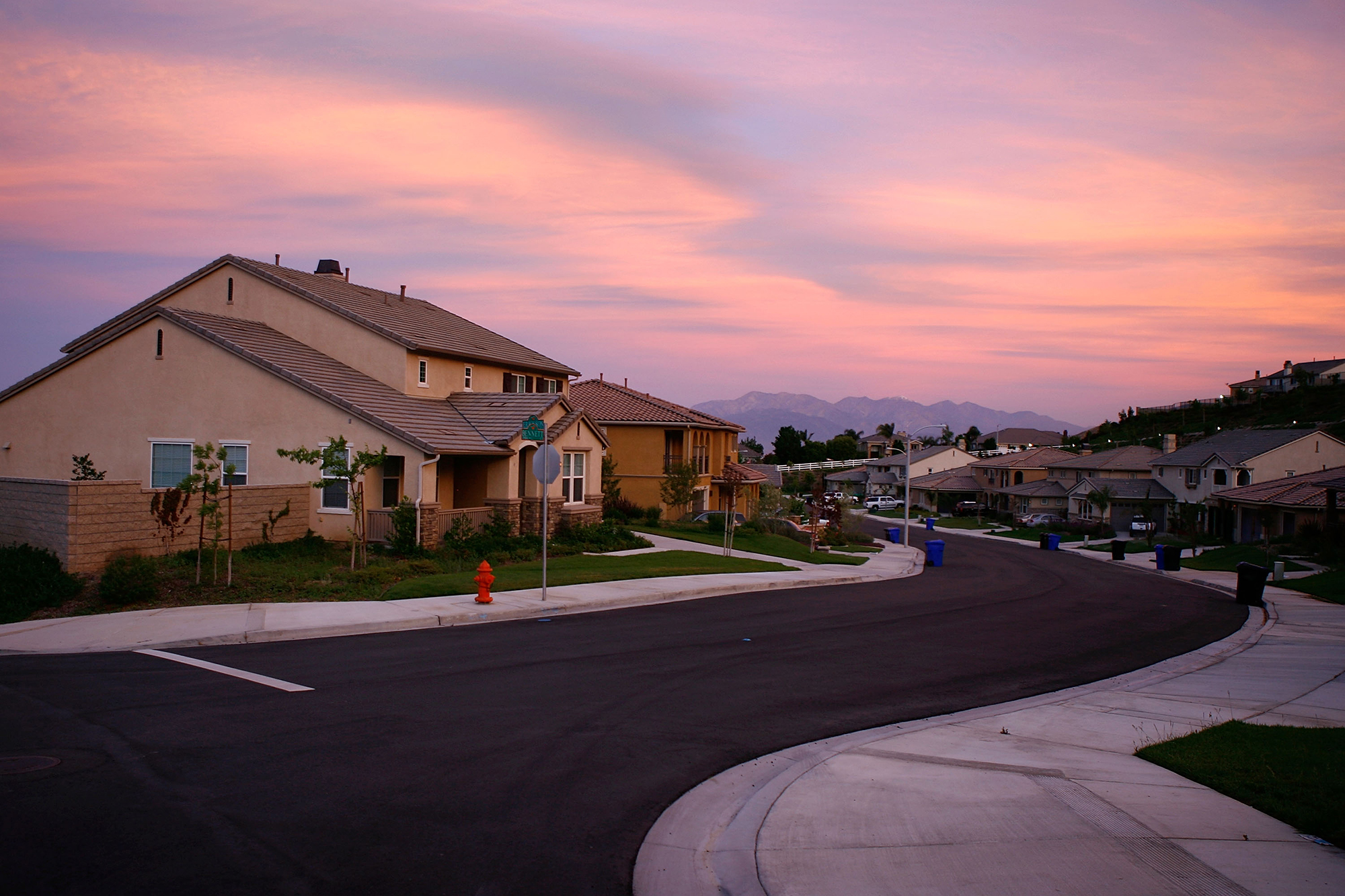
Suburban residents have been alarmed that new legislation could alter their communities.
David McNew/Getty Images
If the housing crisis has made California cities unlivable, blame wealthy liberals, wrote the N.Y. Times’s Farhad Manjoo. “What Republicans want to do with I.C.E. and border walls, wealthy progressive Democrats are doing with zoning and Nimbyism. Preserving ‘local character,’ maintaining ‘local control,’ keeping housing scarce and inaccessible — the goals of both sides are really the same: to keep people out.” N.Y. Times
The L.A. Times’s Liam Dillon pinned the failure of a California measure designed to spur new housing on one group in particular: Suburban homeowners. L.A. Times
2
In other legislative happenings:
| • | A bill advanced that would crack down on medical exemptions for vaccines. California has seen a dubious rise in the exemptions since 2016, when personal belief exemptions were ended. Sacramento Bee | A.P. |
| • | Another measure advanced that would require the U.C. and Cal State systems to provide student access to medication abortions at no cost. CBS News | Newsweek |
| • | A bill to allow bars to serve alcohol for two more hours — until 4 a.m. — is once again winning support. Former Gov. Jerry Brown vetoed the last version. Gov. Gavin Newsom, himself a bar owner, may like the idea. Sacramento Bee | SF Weekly |
3
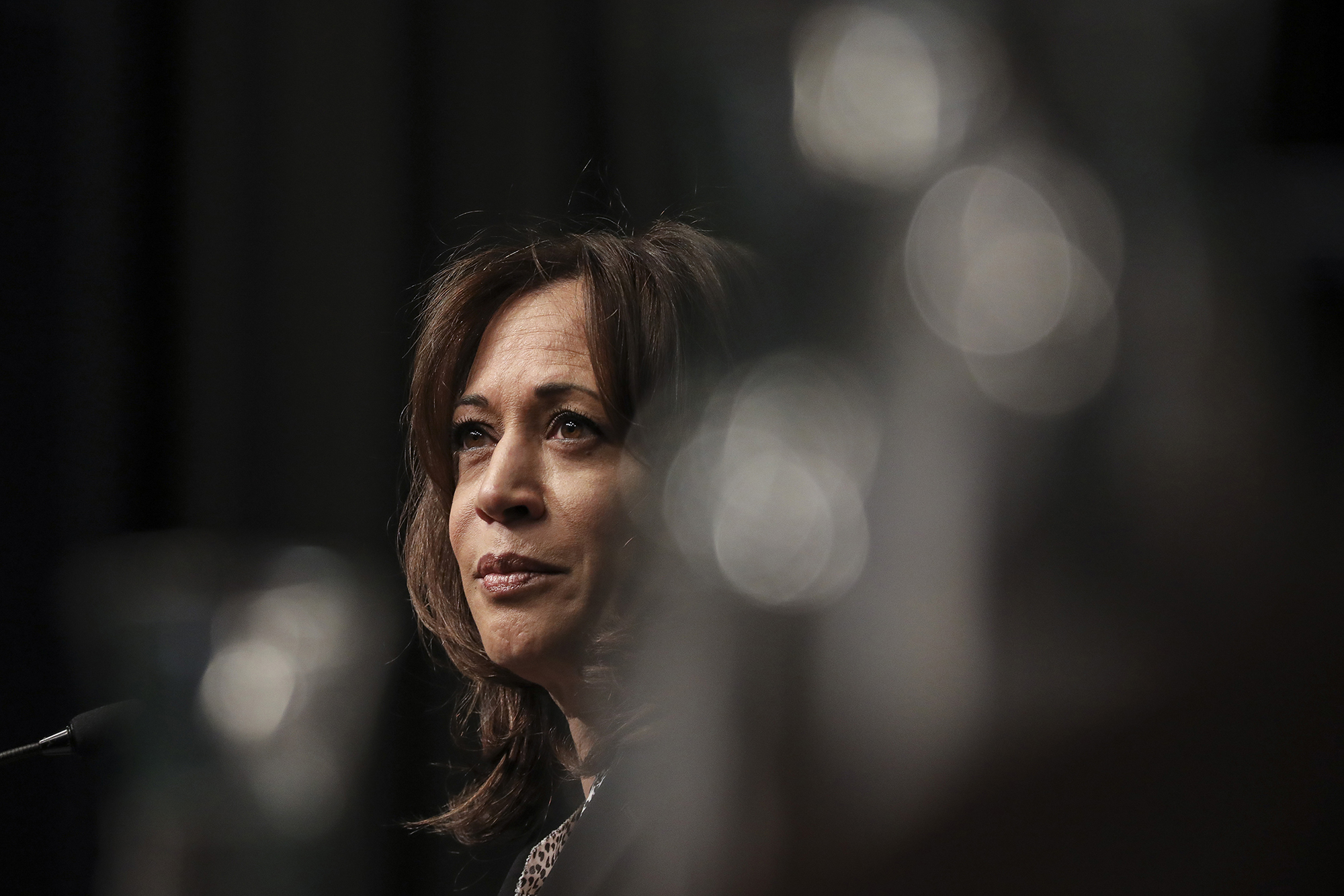
Sen. Kamala Harris has sought to align herself with the progressive movement.
Drew Angerer/Getty Images
California Sunday Magazine examined Sen. Kamala Harris’s confounding legacy as a prosecutor. Now a top-tier candidate for the Democratic presidential nomination, she has espoused similar values throughout her career. But her actions — and inactions — have stirred doubts about what she really stands for.
“It’s noteworthy that for her entire prosecutorial career, she was in a position to do something to stop the senseless destruction of people and their families through the use of cash bail,” said a bail-reform advocate. “But she didn’t.”
4
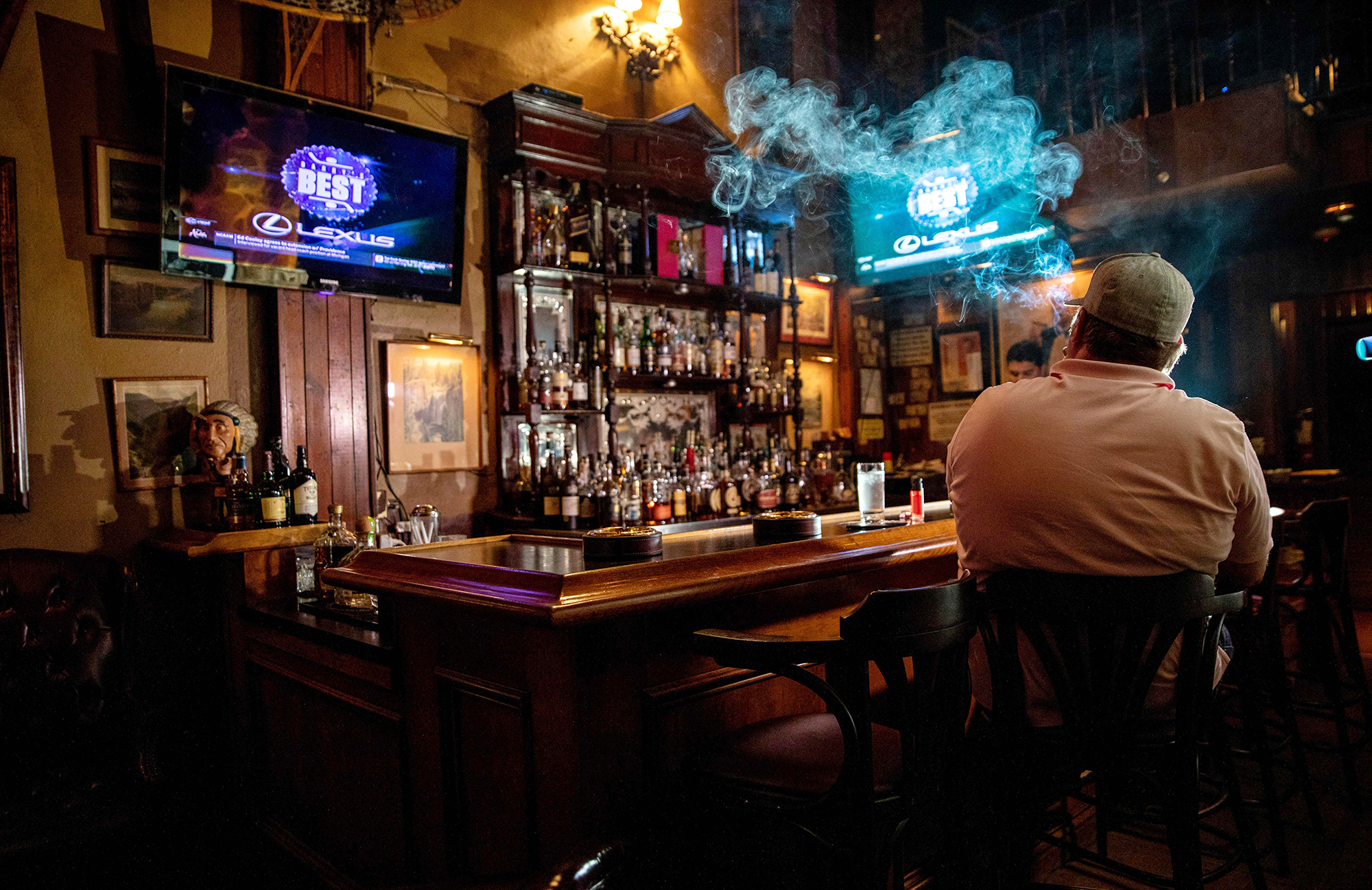
A customer enjoyed a cigar at the Buena Vista Cigar Club in Beverly Hills on Tuesday.
Kyle Grillot/AFP/Getty Images
In 1987, Beverly Hills became the first city in California to ban smoking inside restaurants and most public places. Now it’s poised to enact what’s being called the strictest tobacco ban in the country, eliminating the sale of virtually all recreational nicotine products. One exception: Arnold Schwarzenegger’s favorite cigar club. L.A. Times | Newsweek
Fun fact: Lung cancer deaths are 28 percent lower in California than the rest of the country, and the gap is widening each year. Thank decades of awareness campaigns, smoke-free air rules, and taxation, experts say. UCSD.edu
5
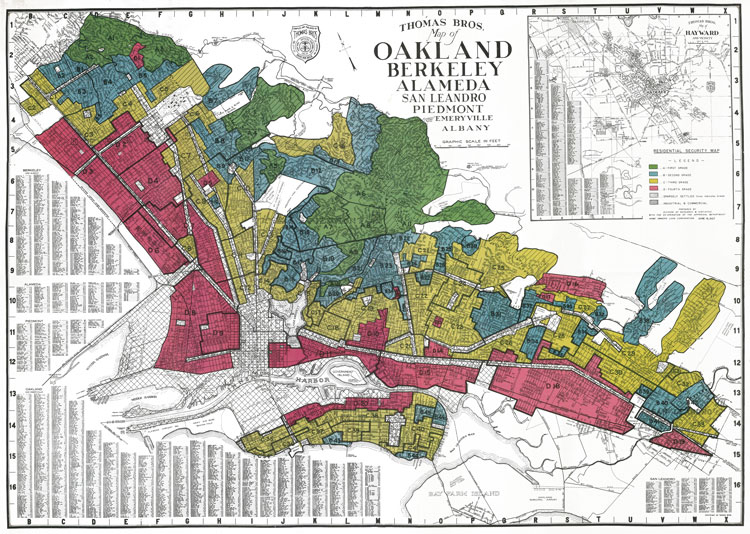
A New Deal-era map showed ratings of Bay Area communities, with those colored red deemed “hazardous.”
University of Richmond
Starting in the 1930s, many Californians couldn’t borrow money to buy houses and build businesses because the federal government labeled their neighborhoods as “risky,” marking them off with red lines on maps. A researcher wondered if redlining would echo in health outcomes half a century after the practice officially ended. His analysis of eight California cities showed that residents of historically redlined neighborhoods are now more than twice as likely as their peers to visit emergency rooms for asthma.
6

Opened in 2014, Juniper & Ivy has established itself as San Diego’s hottest dining destination.
Juniper & Ivy Restaurant
A magazine tabulated the votes of nearly 7,500 readers to rank the greatest restaurants in San Diego, a city abounding in organic farms. Food critic Troy Johnson said a growing roster of star chefs in San Diego has helped elevate it into the pantheon of great American food cities. “The restaurants finally do those farms justice,” he wrote. San Diego Magazine
Separately, the tiny Northern California town of Winters was recognized as America’s fourth best small-town dining destination. USA Today | Sacramento Bee
Northern California
7
Oakland opened a new affordable housing development, with 28 units offered at prices drastically below market value. The city got more than 4,000 applicants. That calculates to a 142-to-1 ratio of home seekers to units. “It is shocking, disheartening, and absolutely troubling to know that so many residents applied for so few spots,” Oakland’s mayor said.
8
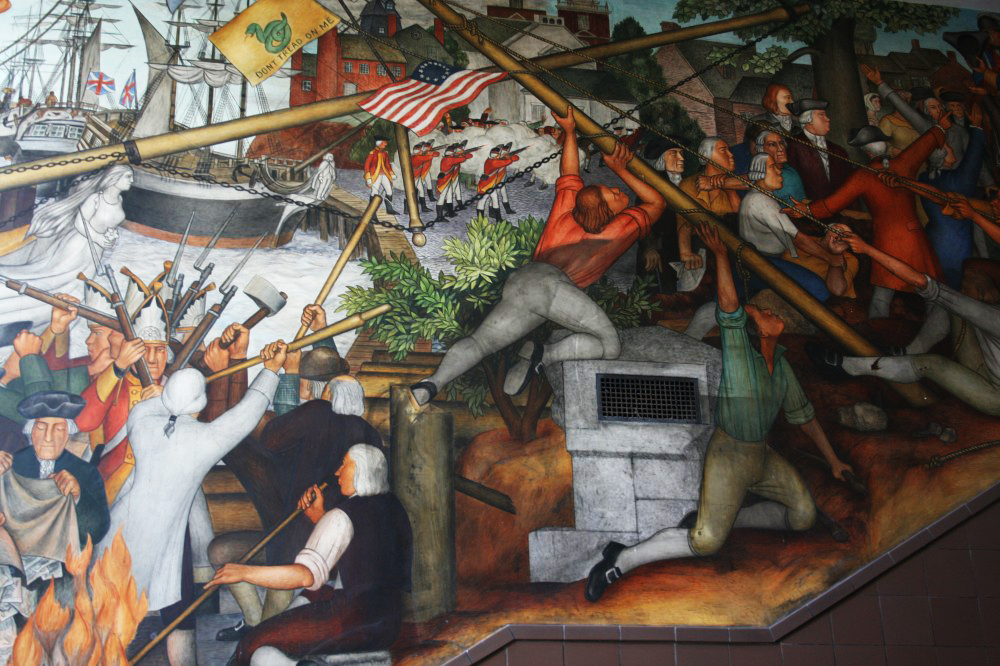
A detail from the “Life of Washington” fresco.
Every day at a San Francisco high school, students walk past artwork depicting slavery and violence against Native Americans. The Depression-era frescoes at George Washington High School have become a flashpoint in the debate over works that reflect history but are hurtful to some groups. Now the city’s board of education is set to decide whether to remove the works.
9
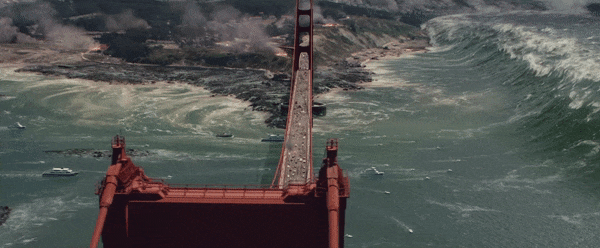
“San Andreas” features a colossal wave.
Hollywood seems to really enjoy obliterating the Golden Gate Bridge on screen. California’s defining icon has been destroyed nine times in the past 10 years. The S.F. Chronicle’s Peter Hartlaub went back and watched every collapse to create a lovingly detailed top 10, ranked from worst to best. YouTube has the relevant scene from the winner: 2015’s earth-cracking “San Andreas.”
10
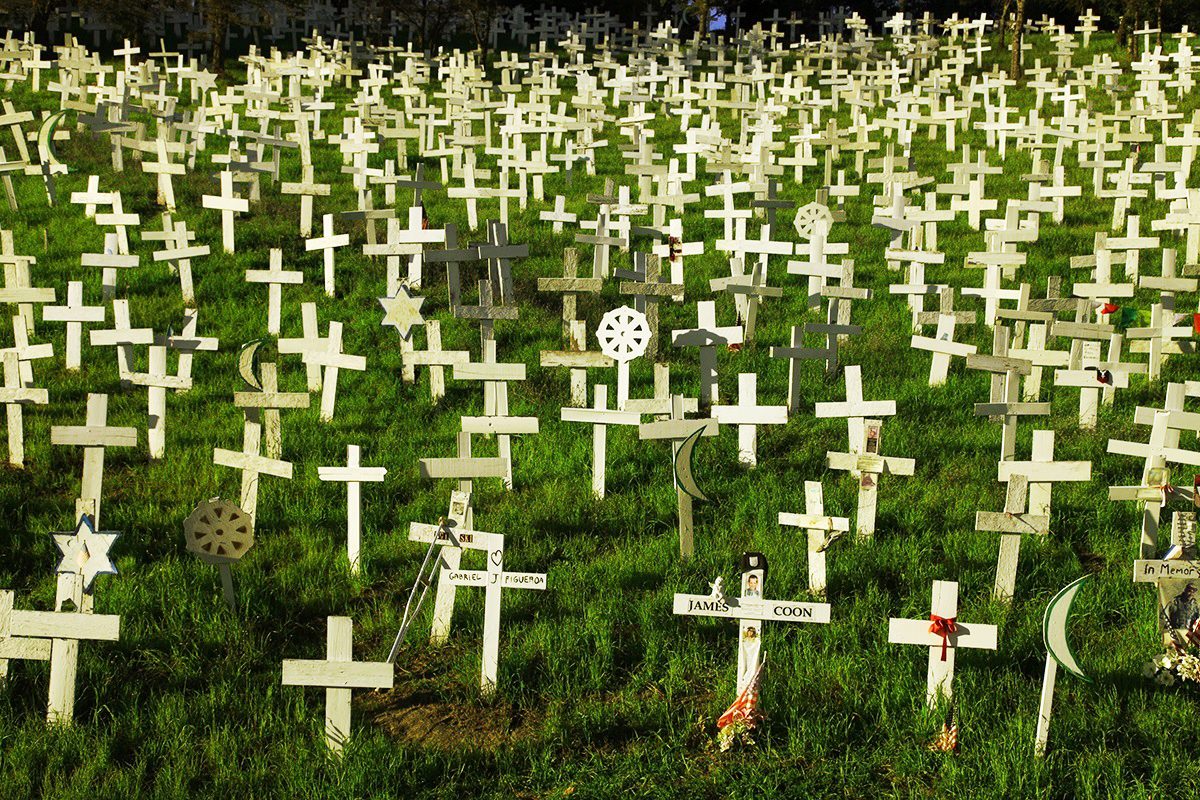
The roadside memorial in Lafayette features more than 5,000 crosses.
Among the places people gather to remember America’s fallen on Memorial Day is a hillside in the East Bay community of Lafayette. Blanketing the slope are several thousand white crosses. The first were planted in 2006 to represent American soldiers killed in the Iraq war, with more added later for those who died in Afghanistan.
It was initially divisive. While some found the memorial moving, others viewed it as the work of “Jane Fonda types” intended to convey a political message rather than honor the fallen. Vandals periodically ripped up crosses. Thirteen years later, the display remains, maintained by a nonprofit group. Volunteers have stopped adding crosses on the crowded hillside, but they still update a death toll painted in black on a white sign. The latest count: 7,955.
Southern California
11
“Bad message. Bad precedent. Abdication of moral responsibility. Risk to us.”
That’s retired Army Gen. Martin Dempsey, former chairman of the Joint Chiefs of Staff, on President Trump’s plan to pardon troops accused of war crimes. Dempsey said the move would be a dangerous signal to U.S. troops and potential adversaries. Among Trump’s potential pardons is Edward Gallagher, a San Diego-based SEAL accused of shooting unarmed civilians and killing an enemy captive while deployed in Iraq. L.A. Times | N.Y. Magazine
Separately, one of Trump’s personal attorneys just signed on to defend Gallagher. S.D. Union-Tribune | Military Times
12
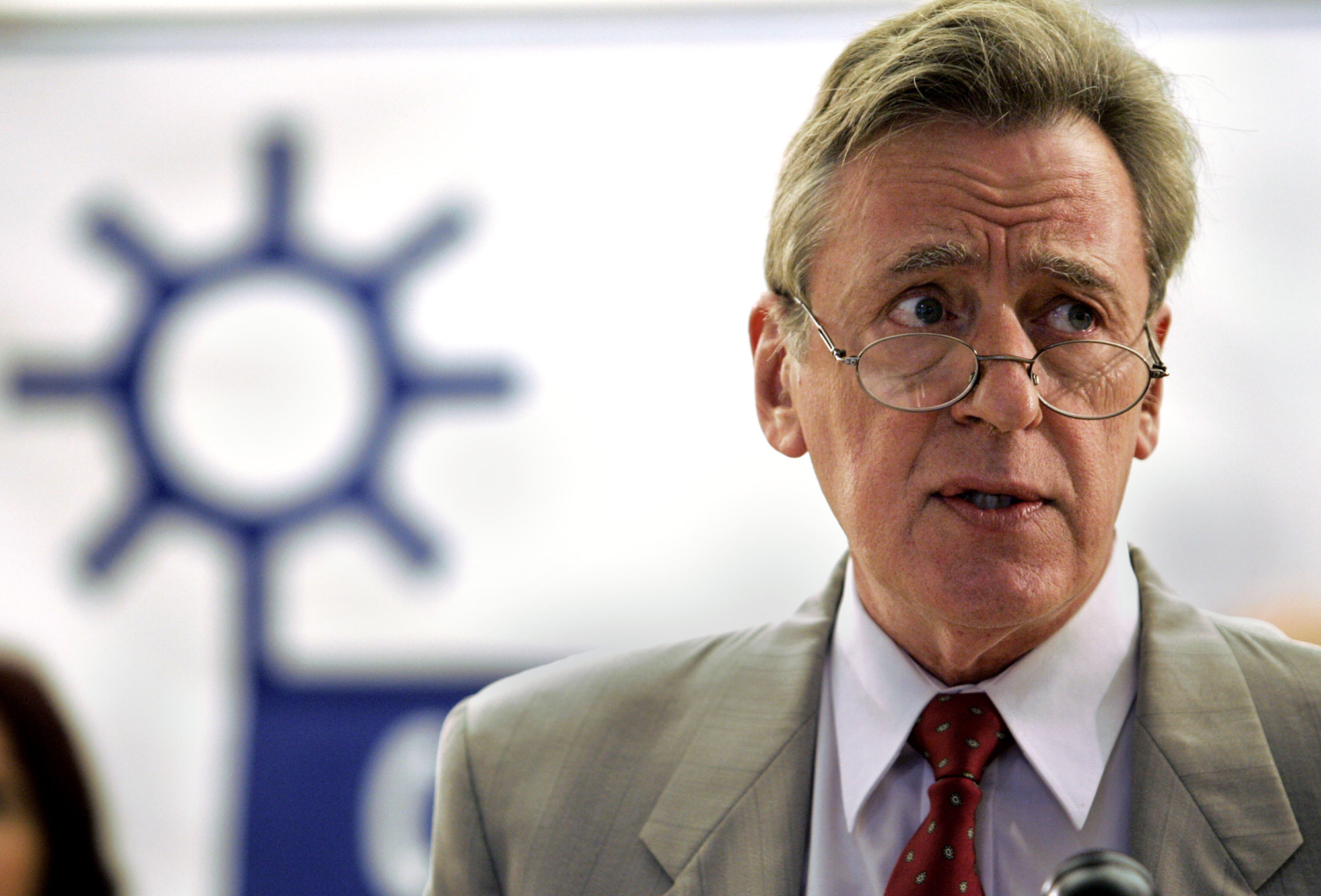
“Is it perfect? No, it’s not perfect,” attorney Peter Schey told the L.A. Times.
Damian Dovarganes/A.P.
L.A. lawyer Peter Schey has been trailblazer in the defense of immigrant youth, helping to win landmark cases and opening his own shelter for homeless migrant youths. But a monthslong investigation by the L.A. Times found a troubling record of neglect at the shelter, known as Casa Libre. It’s been cited a staggering 143 times, many for matters deemed “an immediate risk” to kids. Workers recounted violence, food scarcity, staff shortages, and unresponsiveness to complaints.
13
Michael Avenatti, the L.A. attorney known for representing Stormy Daniels against President Trump, was charged on Wednesday with ripping off the pornographic film actress. Federal prosecutors said Avenatti used a doctored document to divert about $300,000 that Daniels was supposed to get from a book deal, then used the money for himself.
14
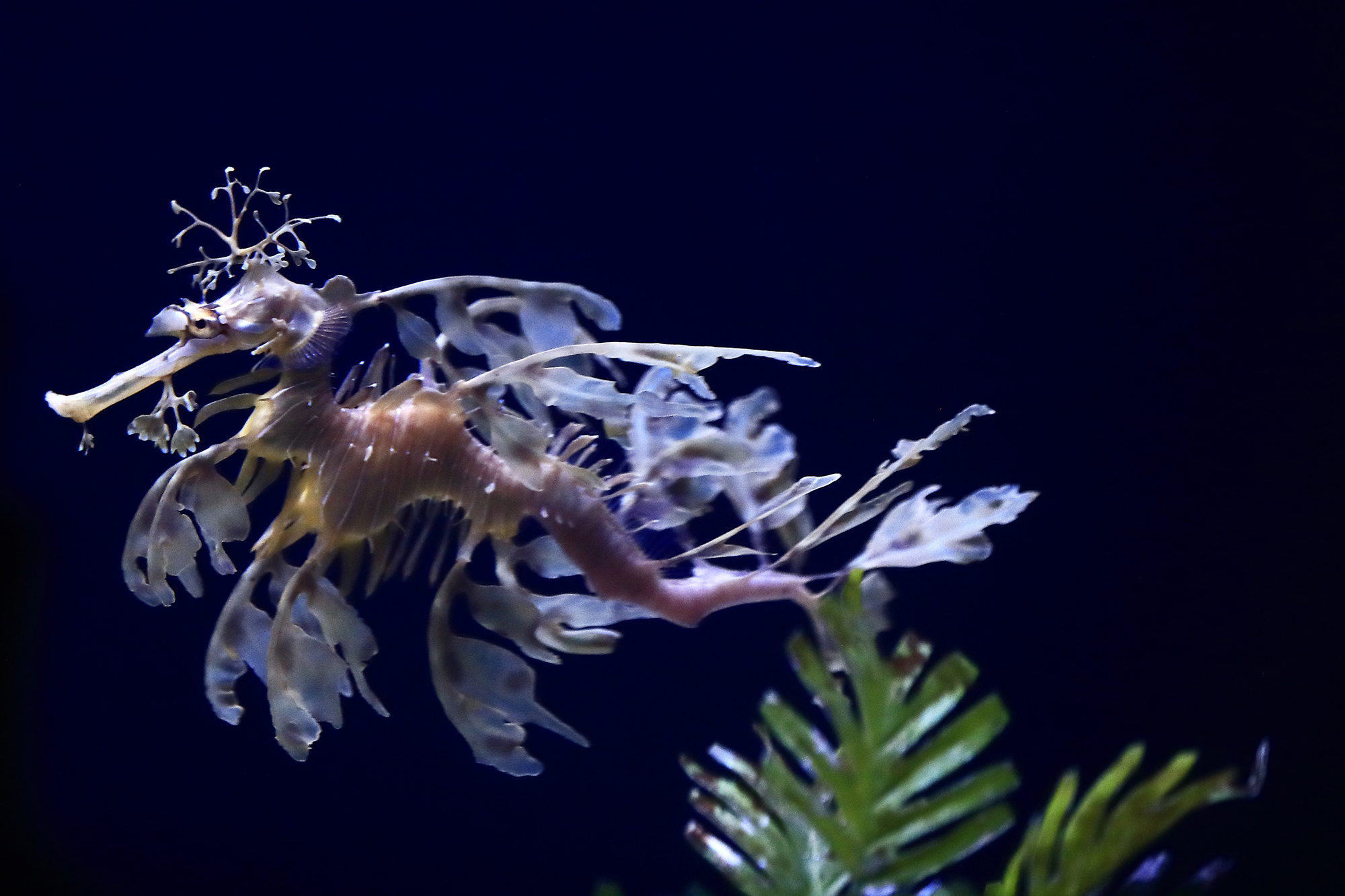
A sea dragon swam at the Birch Aquarium at the Scripps Institution of Oceanography in San Diego.
Gregory Bull/A.P.
A San Diego aquarium has built what is believed to be one of the world’s largest habitats for the surreal sea dragons. “At first glance, it looks like a branch of kelp,” the A.P. wrote, “but then an eye moves among its leafy appendages, and ridges of tiny, translucent fins start to flutter, sending the creature gliding through the water like something from a fairy tale.”
California archive
15
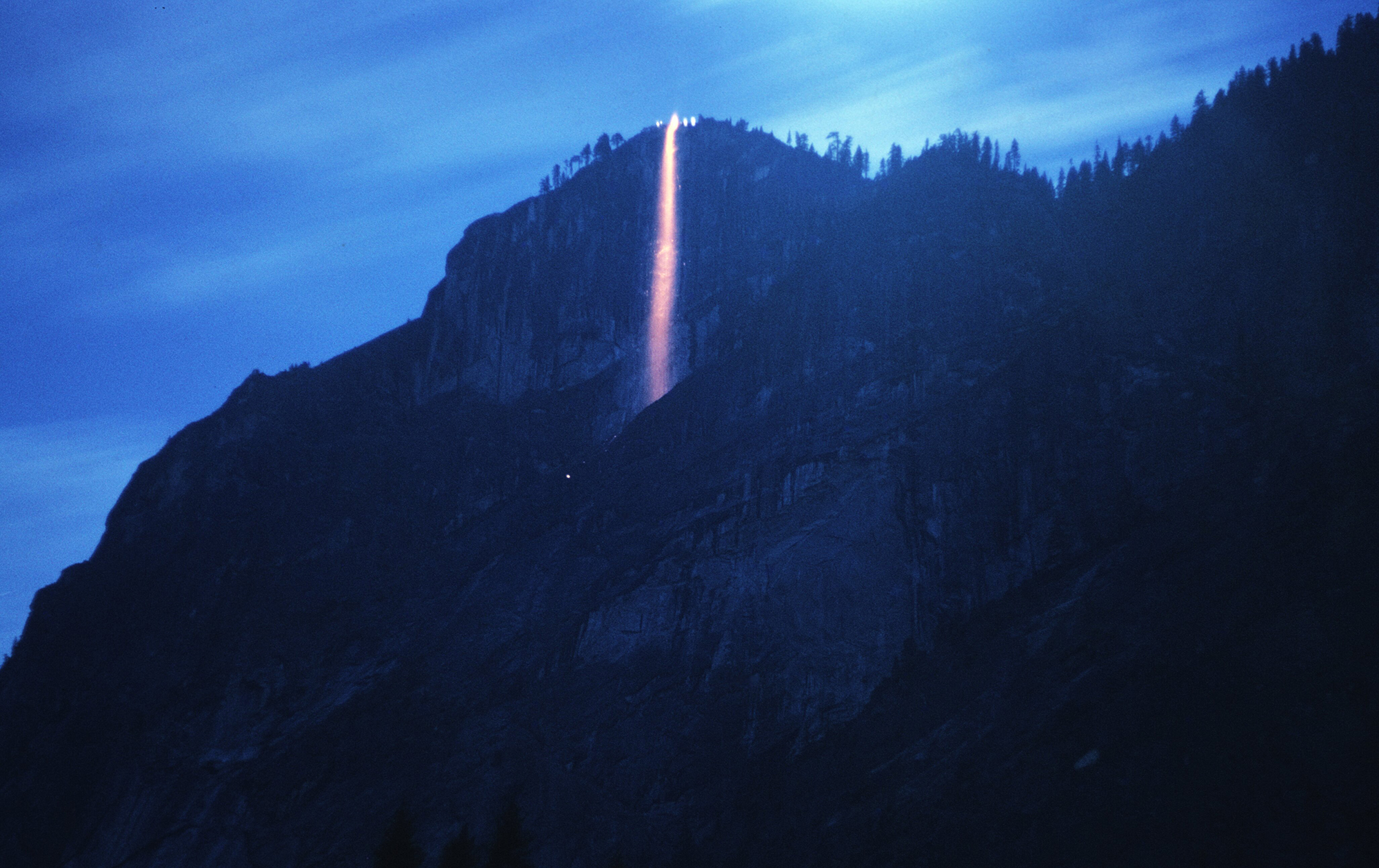
Yosemite’s firefall at Glacier Point was captured in an undated long-exposure image.
Wikimedia Commons
Long before the natural wonder known as Yosemite’s firefall became the Coachella of nature photography, there was a manmade version of the spectacle that delighted generations of visitors to the park. While unthinkable today, people used to push gleaming embers off the edge of Glacier Point as nighttime entertainment for campers in the valley 3,200 feet below.
The tradition was begun in 1872 by an Irish immigrant named James McCauley who operated a small hotel atop Glacier Point. He used to build campfires for guests near the point of the cliff jutting out over the valley. At the end of the night, he pushed the coals over the edge.
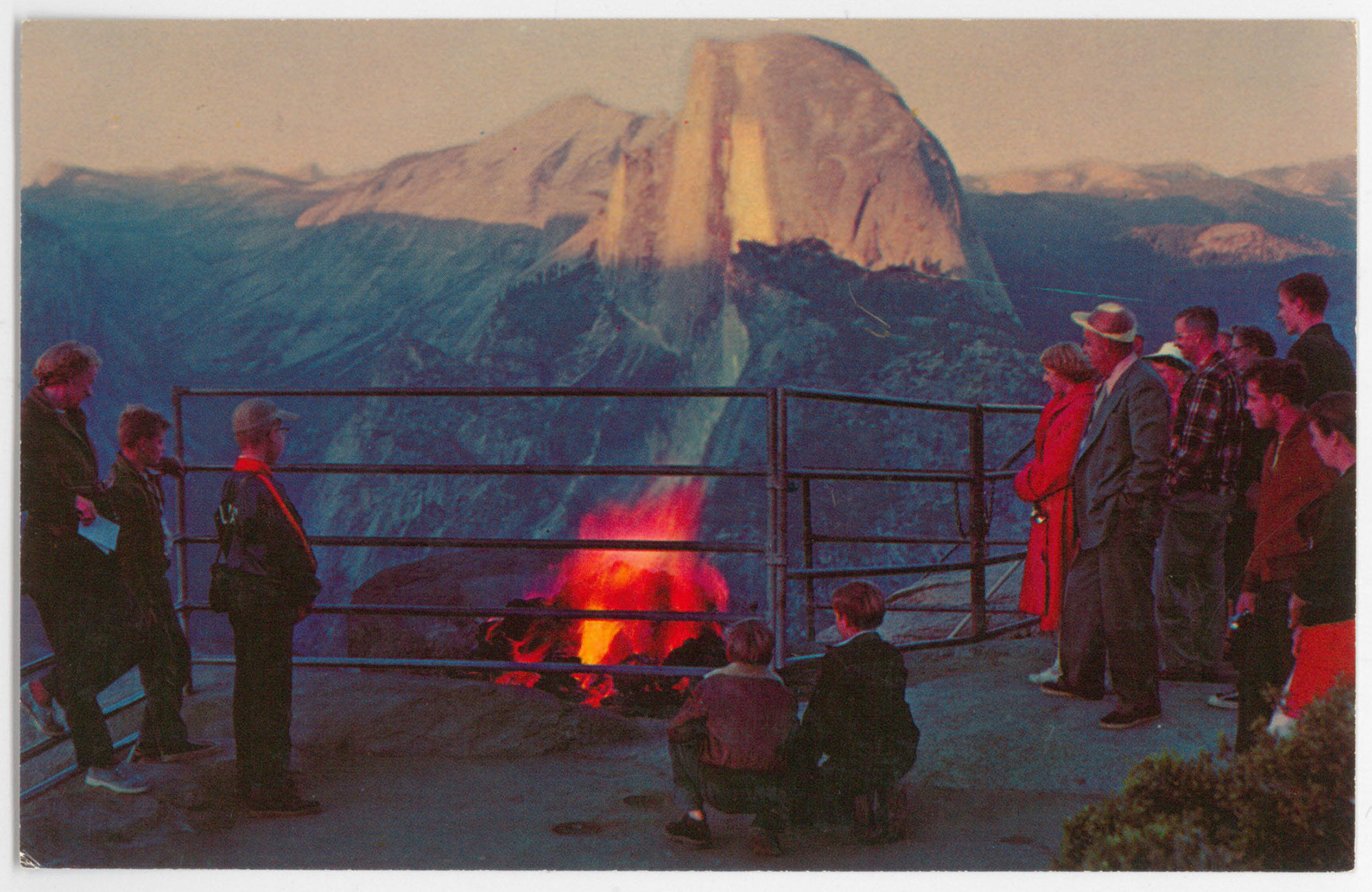
Tourists gathered around the fire atop Glacier Point in a circa 1960 postcard.
KCET
Word soon got to McCauley that campers in the valley were awestruck by the pyrotechnic cascade. So he and his sons made it into a grander display, with more wood and a ceremonial waving of a torch to signal the start of the show.
In later years, the operators of the valley’s Camp Curry conducted the firefall as a nightly summertime event. A master of ceremonies would shout “Let the fire fall!” and campers would sing the popular musical number “Indian Love Call.” President Kennedy saw a firefall in 1960.
Finally, despite howls of public protest, park officials put a stop to the event in 1968, deeming it inconsistent with the mission of preserving nature. Five years later, the first known photo of the sunset-illuminated firefall at Horsetail Fall was captured. Every bit as wondrous, it eventually surpassed the fame of the original.
Wake up to must-read news from around the Golden State delivered to your inbox each morning.